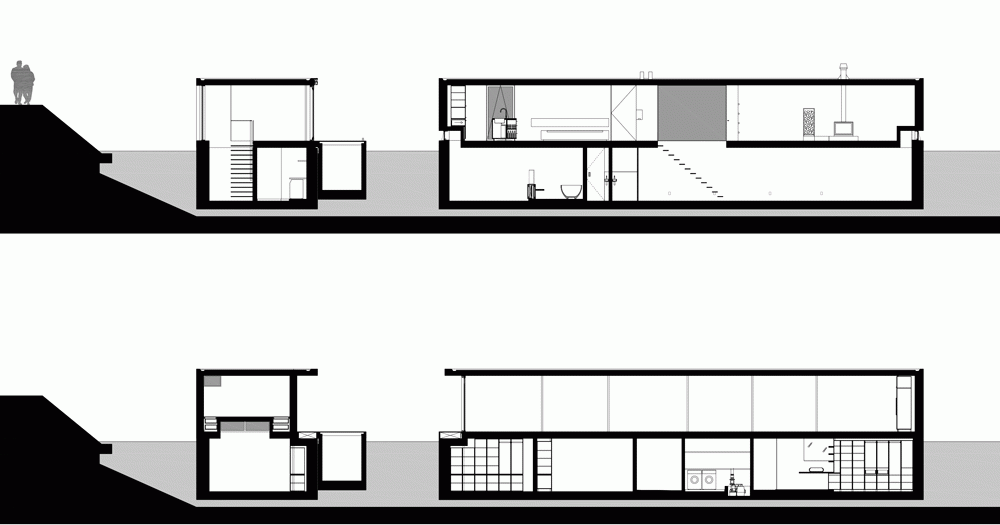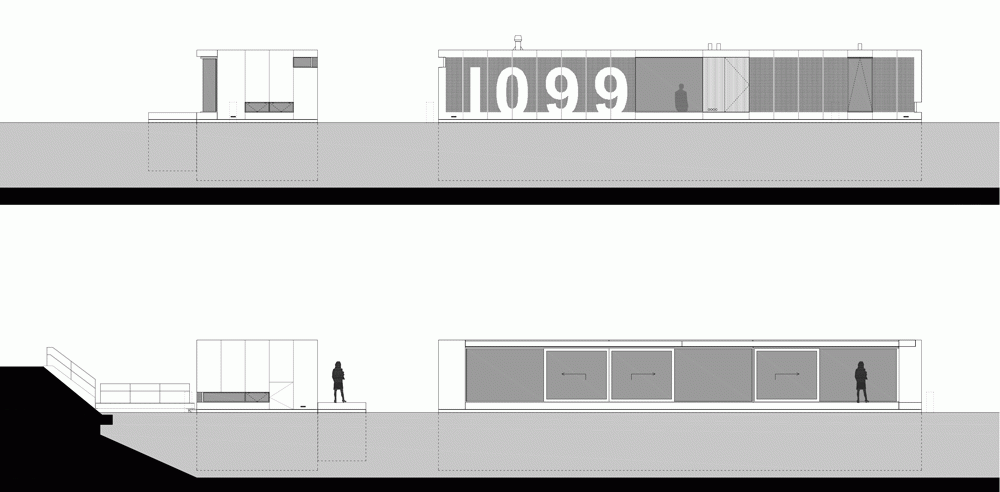Floating home by +31 Architects is moored on an Amsterdam river
Half of this floating house by +31 Architects is submerged below the waterline of Amsterdam's river Amstel, while the other opens out to a buoyant terrace (+ slideshow).
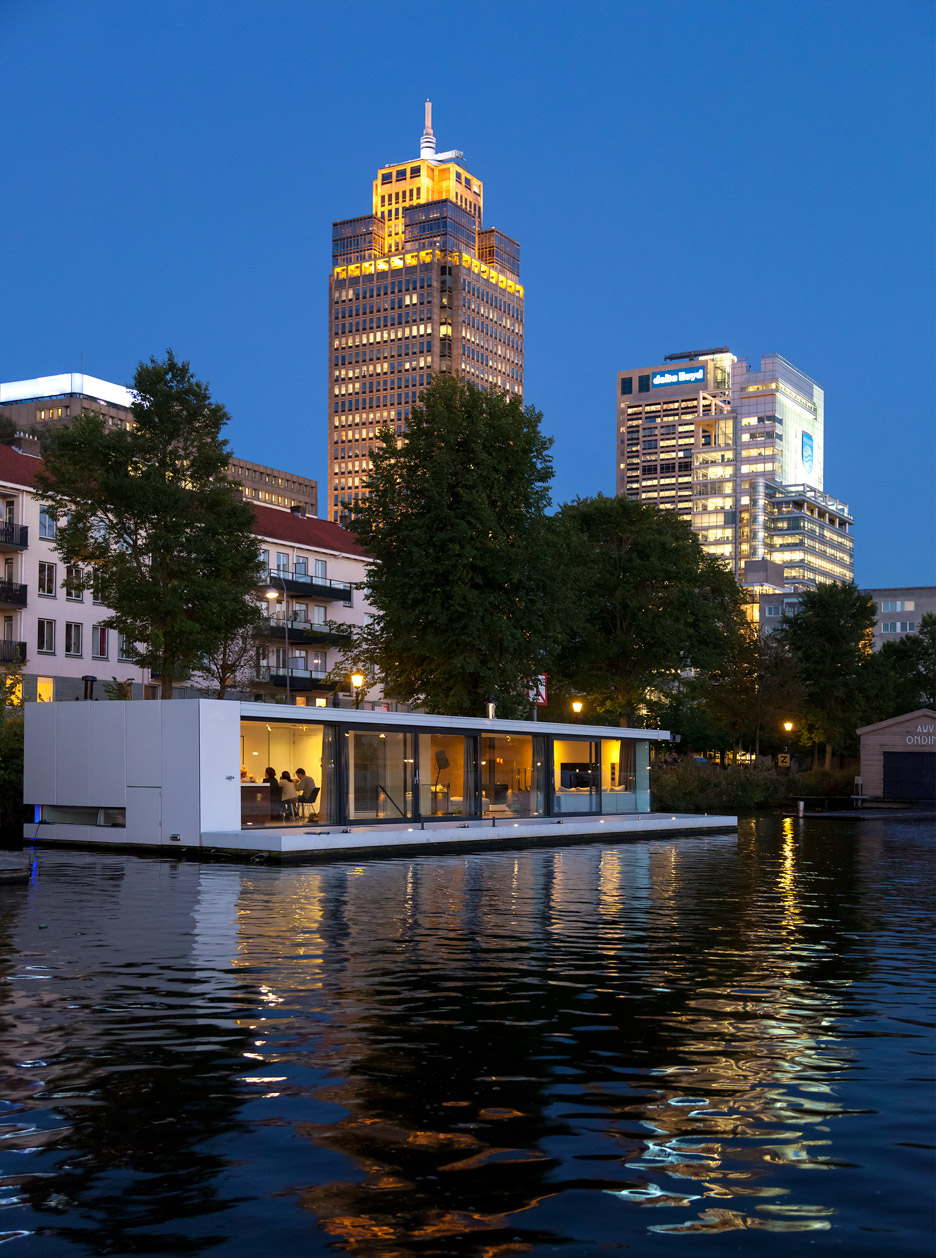
Designed by Amsterdam studio +31 Architects, Watervilla Weesperzijde is among the growing number of houseboats lining the banks of the Netherlands' waterways. The floating villa is located on the river Amstel, just downstream of an earlier houseboat by the firm Watervilla de Omval.
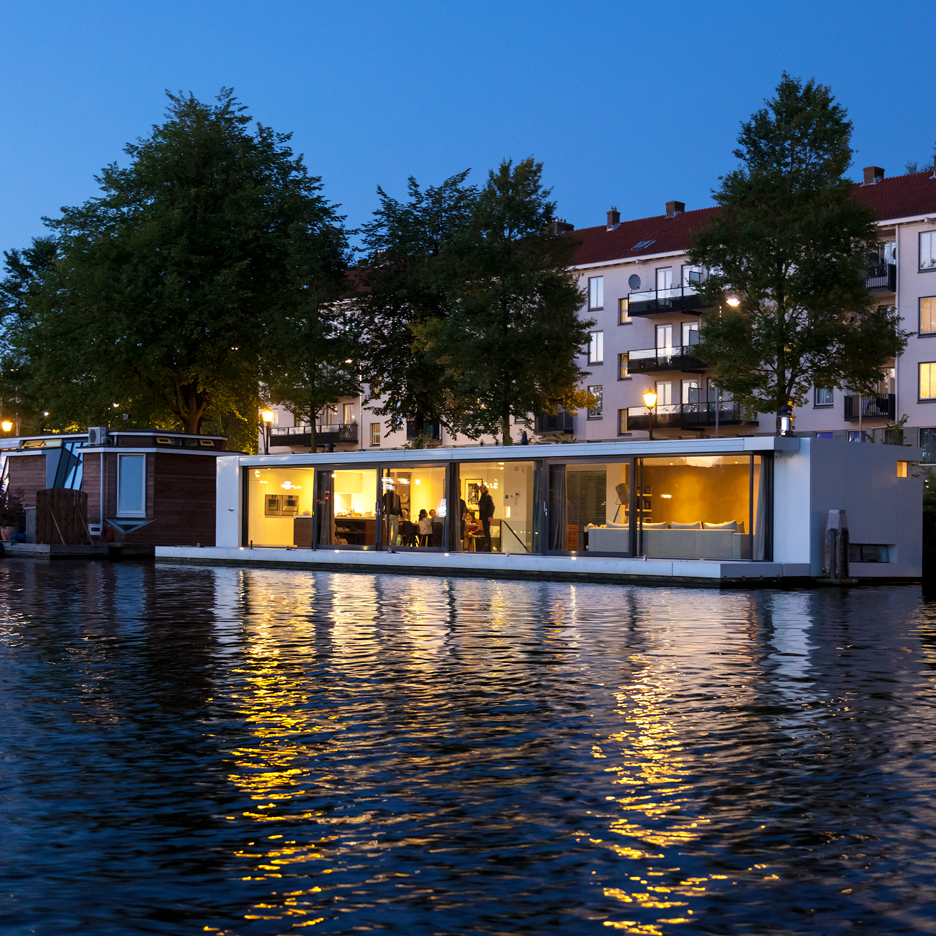
Based on a ship, the lower portion of the house is submerged in the river while the upper storey sits level with the water's surface. The floating design is intended to help the residents "enjoy every day a feeling of being on holiday."
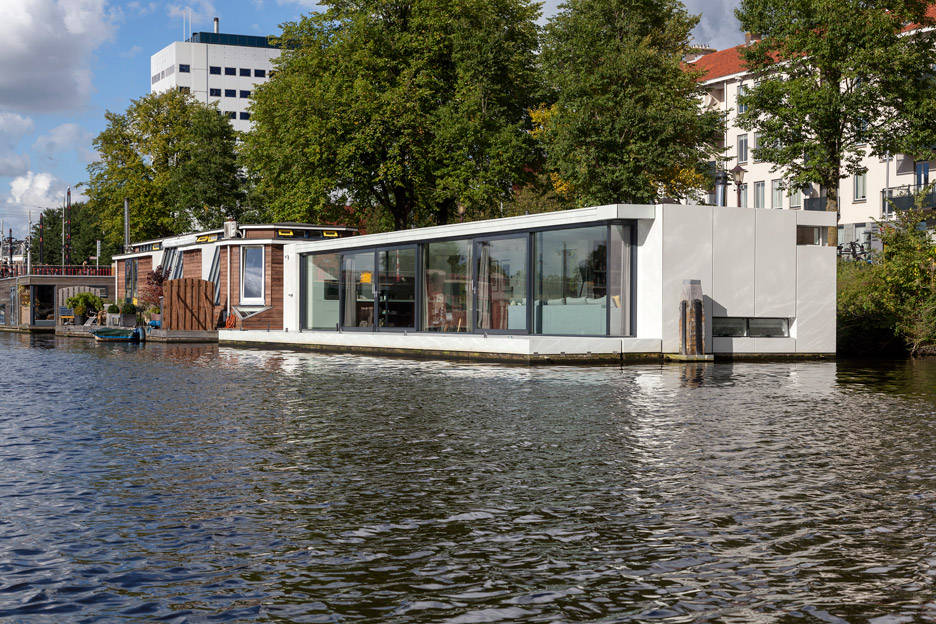
Sliding glass doors added to the lounge and kitchen maximise views of the river. They also provide access to a floating terrace, which is moored alongside the villa and spans the length of the living space.
"The result is a modern watervilla which is characterised on the waterside by a film frame-like glass facade," said the architects.
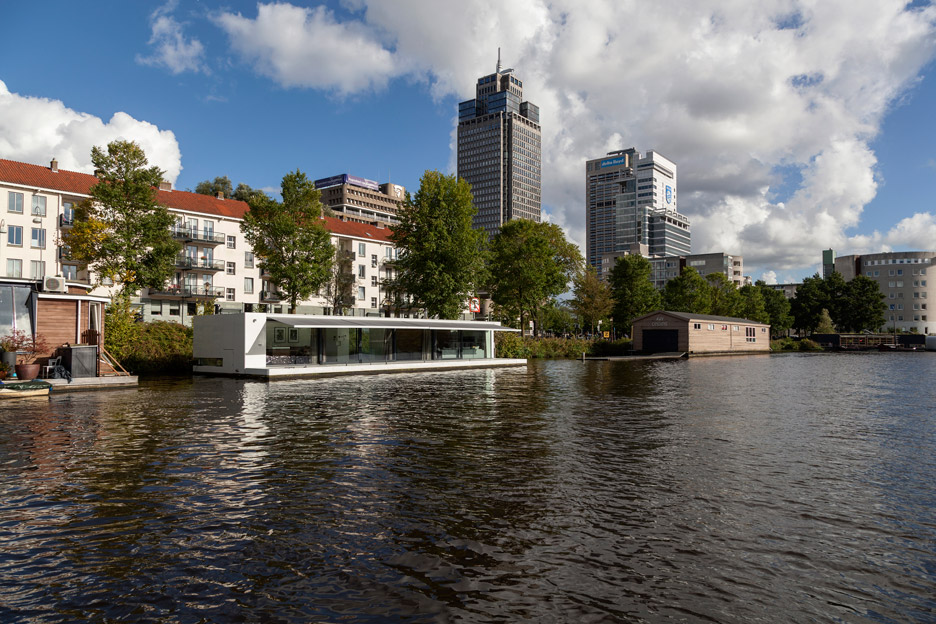
The pale grey flooring of the living area extends onto the terrace, helping to visually merge the two spaces. Three automated sun awnings are integrated into the edge of the building's flat roof and can be retracted at the press of a button.
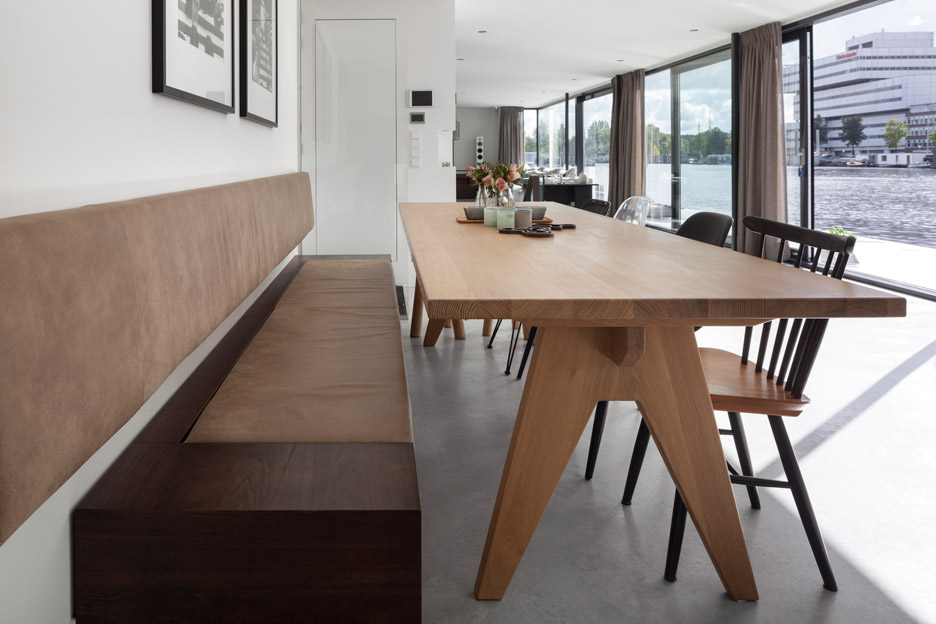
"The floor is extended from the inside to the outside not only having the same colour but also the same height," said the studio. "The almost absence of a physical barrier between the living area and the terrace invites people to take a refreshing dive into the river Amstel."
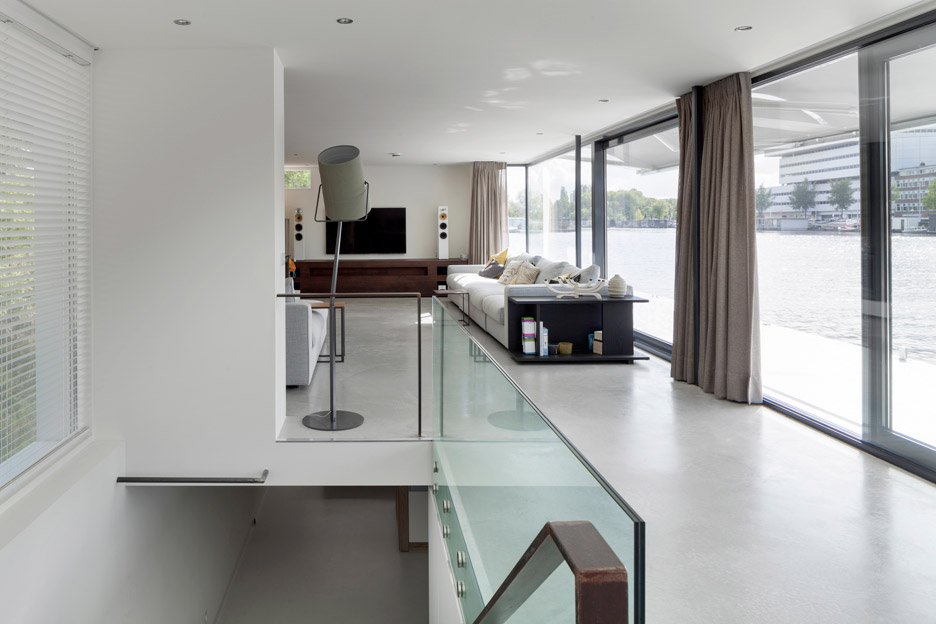
Floating steps descend into the windowless basement, where a pair of bedrooms and bathrooms and a small lounge are located. The stairwell is flanked by glass balustrades that help to bring light down to the lower level, which is largely open plan.
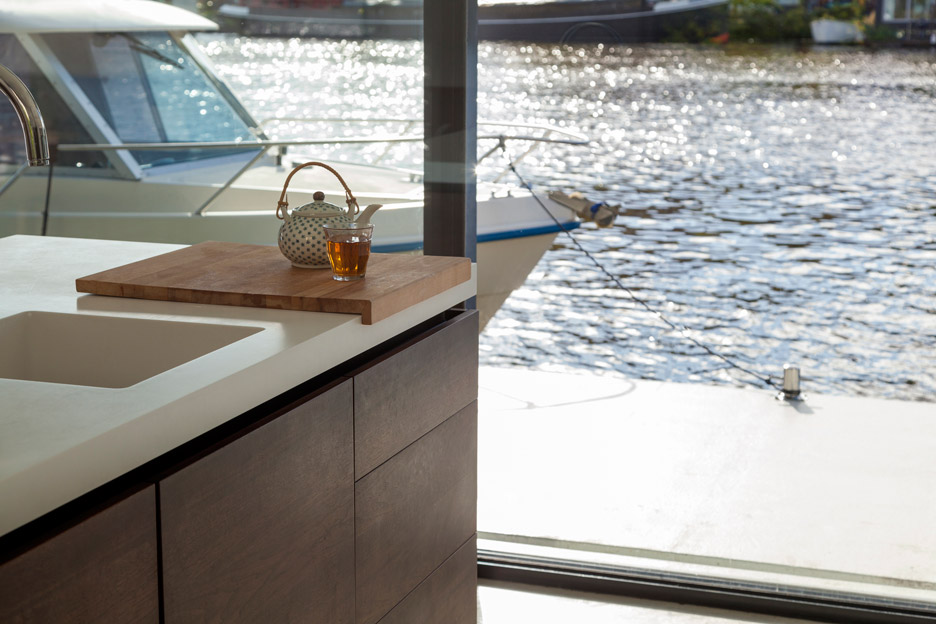
The house is connected to the quay by a wooden bridge, which flexes as the residence rises and falls with the tide.

The quay-facing side of the structure is sealed with perforated aluminium sheeting that displays the house's number. The perforations are illuminated at night by a panel of blue LEDs but remain dim during daylight hours.
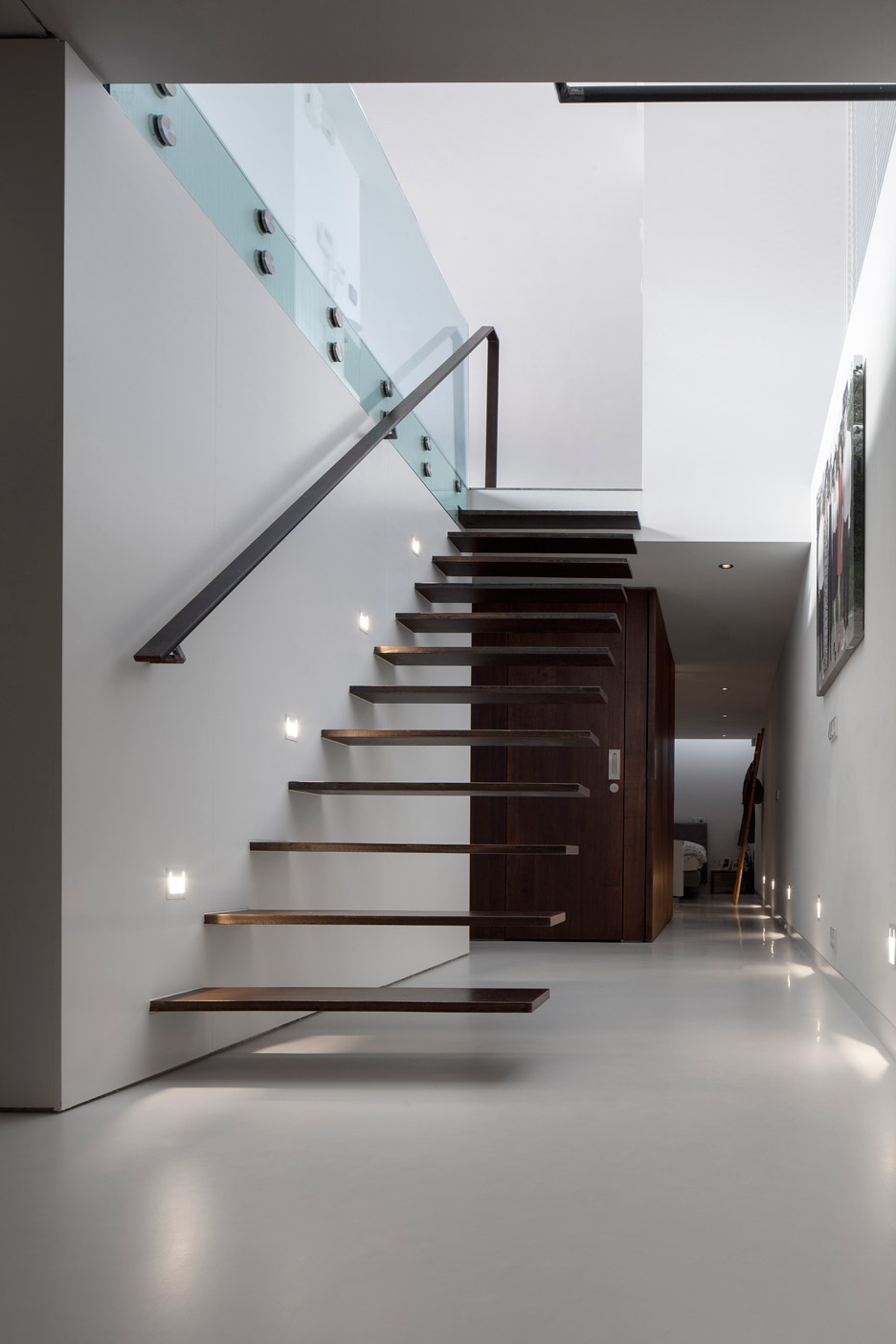
"During the day the holes are dark dots whilst in the dark the holes are lit by a large LED strip that is placed behind the facade," explained the studio. "In the evening the Watervilla transforms itself into a Star Wars-like creation."
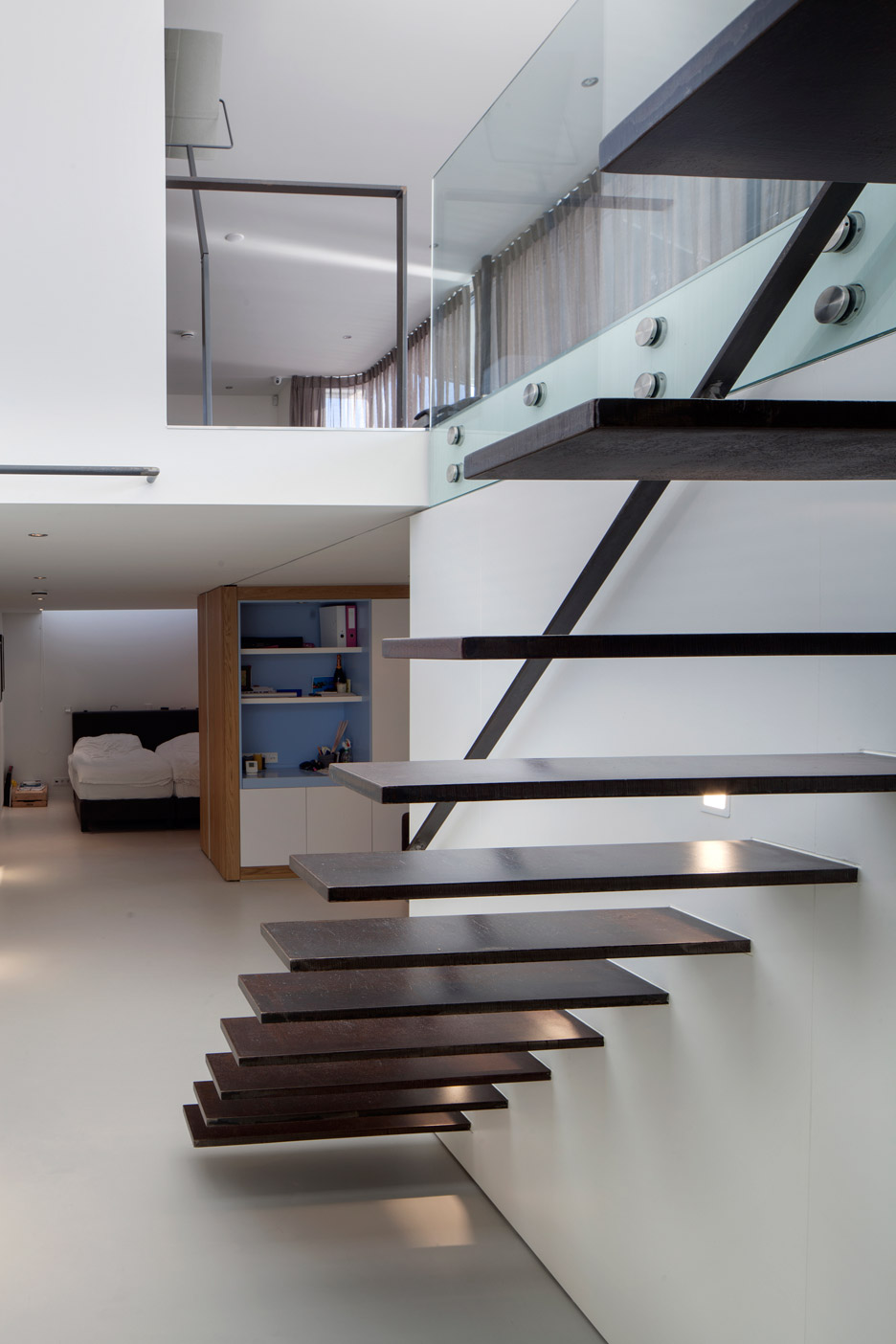
Floating architecture is growing in popularity in the Netherlands, where much of the landmass lies beneath sea level as climate change causes the water level of the nation's waterways to rise.
+ 31 Architects claims that floating architecture is a sustainable solution to the issue, allowing new houses to be built on existing waterways and the basis created by dams and dykes.
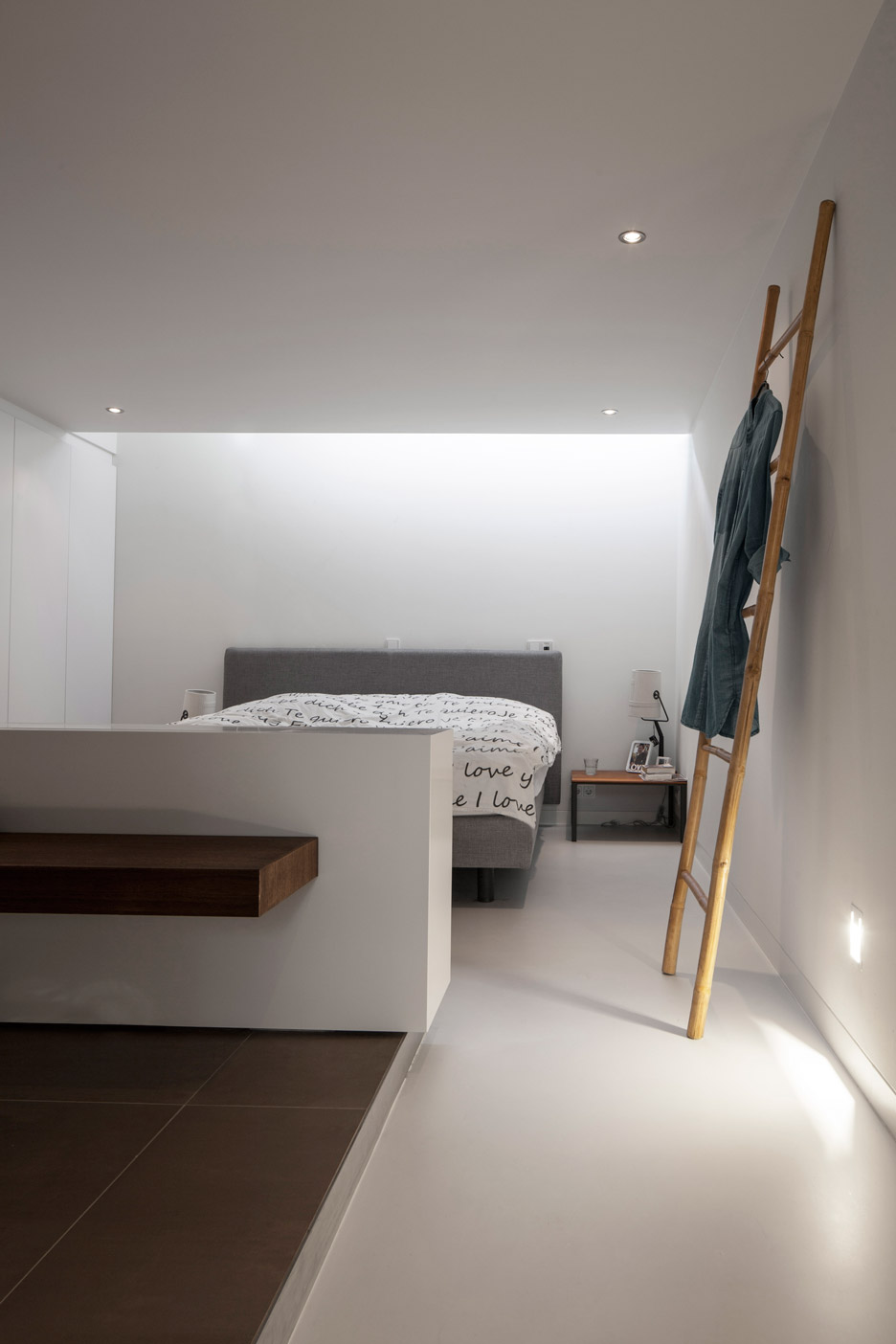
"When needed the floating system can be moved elsewhere at short notice without leaving any scar to the environment," said the firm. "Instead a new house can be placed in to the old situation which makes it the most sustainable and durable way to build."
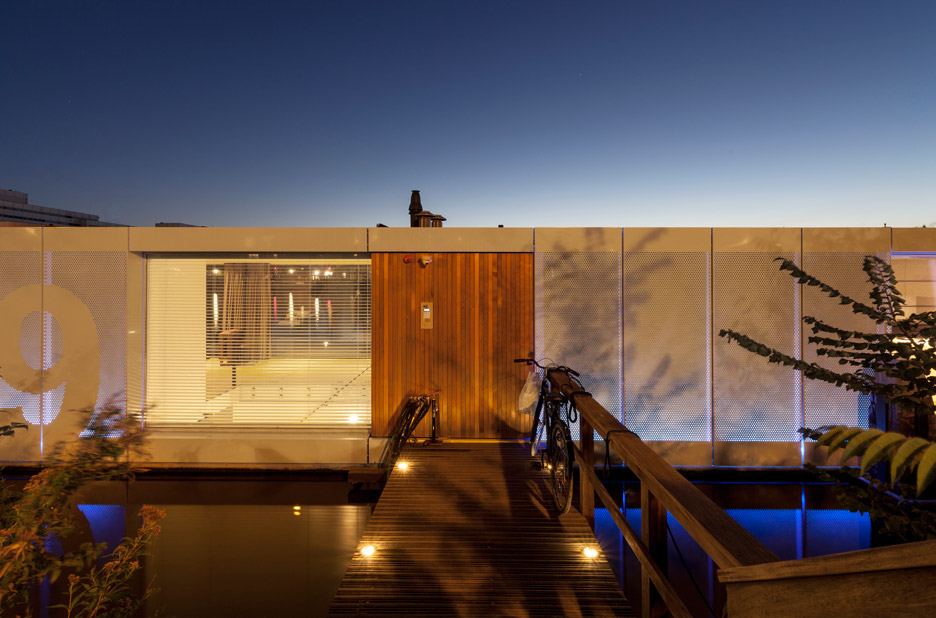
Similar typologies have been proposed by UK firms as a means to deal with flood-stricken areas of the nation and as a solution to London's housing shortage.
Designers of the UK's first amphibious house, Baca Architects, recently developed a buoyant starter home for an NLA competition seeking ideas to address the capital's housing crisis, while at the beginning of 2015 London architect Carl Turner unveiled a prefabricated house designed to float on floodwater.
Photography is by Ewout Huibers.
Project credits:
Architect: +31 Architects
Project team: Jasper Suasso de Lima de Prado and Jorrit Houwert
Building contractor: Post Arkenbouw, Marknesse
Cabinets: Forsa meubels
Aluminium cladding: Kamplacon
Aluminium windows: Sapa

